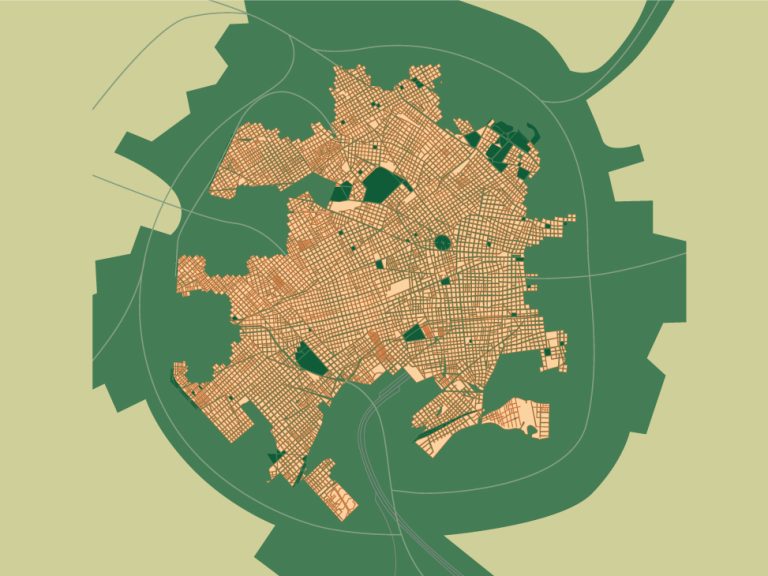Yamini Pahwa
Getting home loan is very BASIC now
Get a loan in under 5 mins

The HMDA Master Plan 2031 is a comprehensive urban planning initiative that aims to guide the growth and development of Hyderabad and its surrounding areas. With Hyderabad’s rapid expansion, the Hyderabad Master Plan 2031 offers a well-structured blueprint for sustainable urban development, covering key aspects such as land use, transportation, infrastructure, and environmental conservation. This beginner’s guide explores the purpose, components, and current updates to the master plan, providing a clear understanding of what this plan entails and its implications for residents and stakeholders in the Hyderabad Metropolitan Region.
Table of Contents
The Hyderabad Metropolitan Development Authority (HMDA) introduced the HMDA Master Plan 2031 to address Hyderabad’s rapidly changing urban landscape. Covering an area of over 7,200 square kilometers, the master plan includes multiple municipalities, manuals, and rural areas within the metropolitan region. The GHMC Master Plan (Greater Hyderabad Municipal Corporation Master Plan) serves as a subset within the larger framework of the HMDA Master Plan, ensuring cohesive development across both urban and semi-urban regions.
The plan primarily focuses on organized growth to prevent overcrowding, reduce environmental degradation, and meet the evolving needs of Hyderabad’s diverse population. Including an HMDA Master Plan 2031 map with survey numbers allows detailed visualization of each area, providing a granular view of land use and zoning, down to specific survey details.
Suggested read: 2 BHK Housing Scheme in Telangana
To address the challenges associated with urban growth, the Hyderabad Master Plan 2031 outlines several objectives:
These objectives reflect HMDA’s commitment to creating a metropolitan region that fosters economic growth, environmental protection, and a high quality of life.
One of the primary components of the HMDA Master Plan 2031 is land use and zoning. The HMDA Map provides detailed information on how land across the region is designated for specific uses, promoting organized growth. Zoning categories in the master plan include:
The HMDA Master Plan 2031 map with survey numbers offers specific insights into each zone, allowing stakeholders to make informed decisions regarding land development, investments, and compliance.
Suggested read: YEIDA Plot Scheme
A significant focus of the Hyderabad Master Plan 2031 is improving infrastructure and transportation to keep up with the city’s growth. The master plan outlines comprehensive transportation projects, including:
Through strategic investments and planned expansions, the Hyderabad Master Plan 2031 seeks to create a well-connected, efficient, and sustainable infrastructure network that supports economic growth and enhances residents’ daily lives.
As Hyderabad grows, environmental sustainability has become crucial to maintaining a high quality of life. The HMDA Master Plan 2031 includes several initiatives to protect natural resources, such as:
The GHMC Master Plan and the HMDA Master Plan work in tandem to promote a sustainable urban model that respects nature while accommodating growth.
Since its inception, the HMDA Master Plan 2031 has undergone periodic updates to accommodate changing demographics, economic conditions, and urbanization trends. Here’s an overview of recent developments:
As Hyderabad continues to evolve, the HMDA Master Plan 2031 will likely undergo further updates to adapt to the city’s changing needs. Keeping up with these changes is essential for residents, investors, and developers who shape Hyderabad’s future.
The Hyderabad Master Plan 2031 represents a thoughtful and strategic approach to urban planning, aimed at building a balanced, sustainable, and efficient metropolis. Whether you’re a resident, developer, or potential investor, understanding the HMDA Master Plan, its objectives, zoning policies, and ongoing updates is crucial for making informed decisions.
With its clear zoning designations, focus on sustainability, and comprehensive infrastructure plans, the HMDA Master Plan 2031 is a cornerstone in Hyderabad’s urban journey. By staying updated on the HMDA Master Plan 2031 map with survey numbers and tracking developments mandal wise map, you can stay informed and participate in the exciting growth trajectory of one of India’s most vibrant metropolitan regions.
The HMDA Master Plan 2031 divides the Hyderabad Metropolitan Area into several zones to guide balanced development. These zones include residential (R1 and R2), commercial, industrial, agricultural, recreational, and green belt zones, each catering to specific land-use needs. The plan also includes a peri-urban zone, which provides a transitional area between urban and rural regions. Each zone follows distinct regulations to ensure organized growth.
The HMDA Master Plan 2031 is a comprehensive urban development framework by the Hyderabad Metropolitan Development Authority (HMDA), aiming to manage and guide Hyderabad’s expansion sustainably. Covering land use, zoning, infrastructure, environmental protection, and social amenities, the plan is structured to support balanced growth across Hyderabad and its surrounding areas, including rural and peri-urban regions.
In the HMDA Master Plan 2031, R1 and R2 zones are subcategories of residential zones:
R1 (Residential Zone 1): Primarily for high-density residential development, allowing multi-family residences, apartments, and high-rise buildings. Generally located closer to the city center.
R2 (Residential Zone 2): Designated for low- to medium-density housing, including single-family homes, duplexes, and smaller residential communities, usually positioned farther from the central business areas.
The peri-urban zone in the HMDA Master Plan 2031 serves as a transitional area surrounding the urban zones, providing a buffer between dense urban developments and rural landscapes. This zone allows for controlled development with mixed land use, helping manage suburban expansion and maintain environmental balance while supporting future urbanization needs.
The final rule of HMDA refers to the regulations and guidelines set forth by HMDA in the master plan, which outlines the zoning laws, building codes, and development standards for the Hyderabad Metropolitan Region. These rules are legally binding and ensure that all development projects align with the region’s sustainable growth goals. Compliance with these rules is essential to avoid penalties and support the city’s planned urbanization.
Published on 4th November 2024
Get a loan in under 5 mins